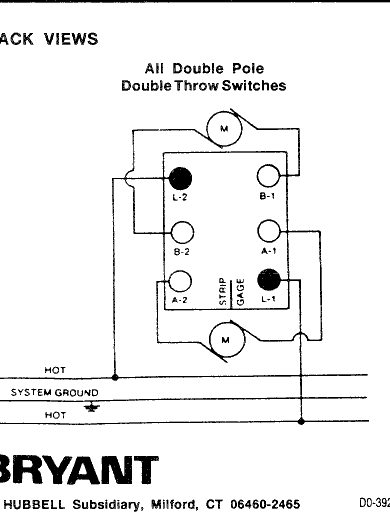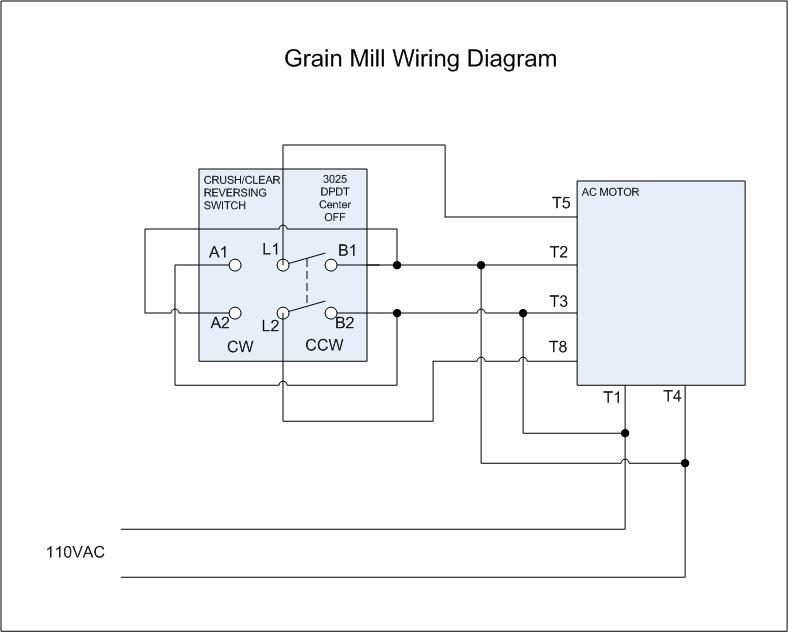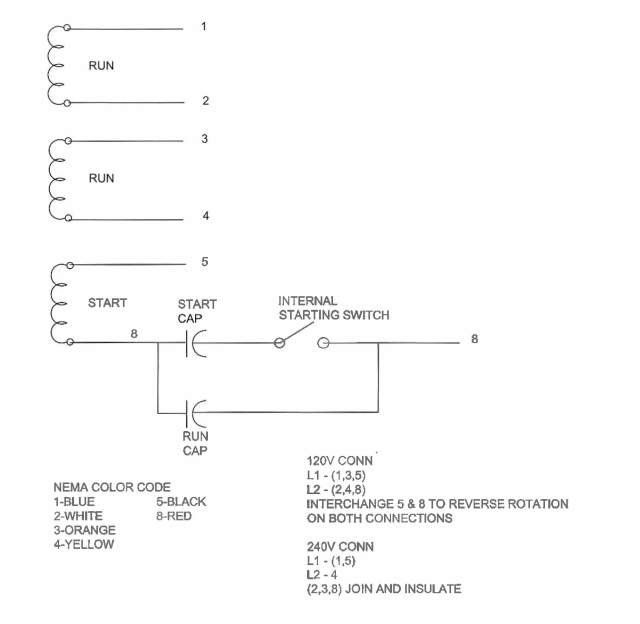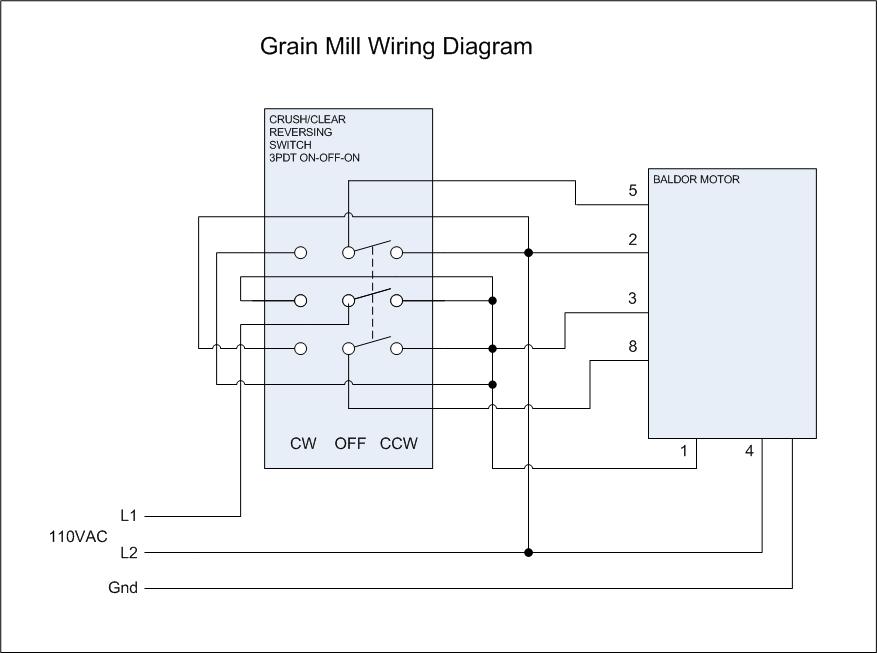ebstauffer
Well-Known Member
I have this motor and a gear reducer powering my MM2.0. Not one to leave well enough alone I wanted to wire up a Hubbell 3025 swith as a reversing switch (I have no good reason to do so, I think you could probaby grind rocks in this thing). The wiring on the motor is relatively simple -- to reverse you simply switch polarity on the T5 and T8 wires -- the others stay the same. The switch schematic is at the bottom.
I have it wired up and it sort of works. If I start it with the switch in the middle (off) position the motor makes a "grrrrrrr" ing sound. It's not pleasant. If I start it with the switch in the down position it move CCW. Toggling the switch neither shuts it off nor reverses direction (I bet it has a centrifugal switch to stop this stupidity). If I unplug, toggle switch up and plug it in the travel is reversed.
What have I done wrong?

I have it wired up and it sort of works. If I start it with the switch in the middle (off) position the motor makes a "grrrrrrr" ing sound. It's not pleasant. If I start it with the switch in the down position it move CCW. Toggling the switch neither shuts it off nor reverses direction (I bet it has a centrifugal switch to stop this stupidity). If I unplug, toggle switch up and plug it in the travel is reversed.
What have I done wrong?


















![Craft A Brew - Safale BE-256 Yeast - Fermentis - Belgian Ale Dry Yeast - For Belgian & Strong Ales - Ingredients for Home Brewing - Beer Making Supplies - [3 Pack]](https://m.media-amazon.com/images/I/51bcKEwQmWL._SL500_.jpg)














































